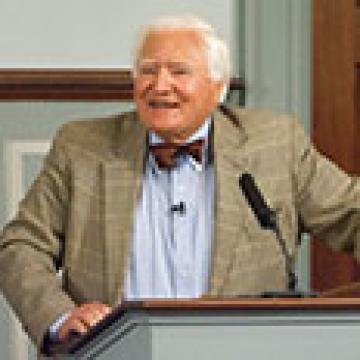Zachary Taylor: Life Before the Presidency
Born into a family of planters in Virginia on November 24, 1784, Zachary Taylor spent his youth in the frontier outpost of Louisville, Kentucky. For most of Zachary's childhood, his Louisville home was a small cabin in the woods. As his family prospered, the cabin became a substantial brick house that Zachary shared with his seven brothers and sisters. By 1800, Taylor's father owned 10,000 acres, town lots in Louisville, and twenty-six slaves.
Although educated, Zachary was a poor student. His handwriting, spelling, and grammar were crude and unrefined throughout his life. Even as a boy, he wanted a career in the military; for a planter's son, it was a respectable alternative to law and the ministry.
Taylor received his first commission as an officer in 1808 and was immediately assigned to command the garrison at Fort Pickering, located in modern-day Memphis. From that moment until his election as President, Taylor was in the military, stationed at a succession of frontier outposts.
In 1810, Taylor married Margaret Mackall Smith, a member of a prominent Maryland family. They eventually had five daughters and one son, but lost two of the daughters at a young age to sickness. As Zachary moved from one wilderness outpost to another in the Mississippi Valley frontier, his family often accompanied him. In 1840, Mrs. Taylor finally settled down in Louisiana when Zachary assumed command of the fort at Baton Rouge. Although a poorly paid career officer, Taylor had parlayed the 300 acres of land given to him by his father into holdings in Kentucky, Louisiana, and Mississippi. In 1850, his estate was valued at around $120,000—equivalent to $6 million today.
Indian Fighter Fame
By 1845, Taylor had gained fame as an Indian fighter in the nation's continuing warfare against Native Americans. His service included postings in the present-day states of Wisconsin, Minnesota, Mississippi, Oklahoma, Kansas, Louisiana, Arkansas, Florida, and Texas. Among other Indian battles, he engaged the Sacs, led by Chief Black Hawk, in Illinois in 1832 and the Seminoles in Florida in the late 1830s.
Taylor's willingness to share the hardships of field duty with his men earned him the affectionate nickname "Old Rough and Ready." Although he fought Native Americans in numerous engagements, much of his service was devoted to protecting their lands from invading white settlers. Taylor seemed to understand if not sympathize with the plight of the Native Americans, and he admired their style of guerrilla warfare. He frequently bemoaned the incompetence of the citizen militia units that he commanded in comparison to the superb discipline and unity of his Indian foes. For Taylor, the best solution to the ongoing wars required a strong military presence to stand between white settlers and the Native Americans. He viewed anything less as a poor and ultimately doomed solution.
Mexican War Hero
It was not his success as an Indian fighter, however, that propelled Zachary Taylor into national prominence. That achievement came from his military victories against Mexican troops during the war with Mexico (1846-1848). Briefly told, when Texas was granted statehood in 1845, President James K. Polk ordered Taylor into disputed lands on the Texas-Mexico border. When Mexicans there attacked his troops near the Rio Grande River, Polk declared to Congress, in May 1846, that war had begun by an act of Mexico. Events then happened rapidly. With superior artillery, Taylor easily defeated the substantially larger Mexican forces in Palo Alto, Mexico. Taylor then attacked the "un-destroyable" city of Monterrey, inflicting heavy casualties on its Mexican defenders, leaving 800 killed or wounded.
General Winfield Scott, commander of all U.S. troops, then ordered half of Taylor's army to join his troops for an assault on Veracruz. Mexican General Santa Anna, intercepting a letter from Scott to Taylor, knew that "Old Zack" (another nickname) would be left with just 6,000 men—most of whom were nonregulars. In February 1847, Santa Anna threw his nearly 20,000 soldiers into the Battle at Buena Vista, determined to annihilate "Old Rough and Ready." The two armies clashed, and when the smoke cleared, 1,800 Mexican soldiers lay dead or wounded—Taylor lost 672. Thoroughly defeated, the "Mexican Napoleon," as Santa Anna called himself, left the field, and General Zachary Taylor became an American hero.
The word of how Old Zack had fought alongside his troops in hand-to-hand combat at both Monterey and Buena Vista spread like a prairie fire across the nation. Taylor was compared to American war heroes George Washington and Andrew Jackson in the popular press. Stories were told about his informal dress, the tattered straw hat on his head, and the casual way he always sat atop his beloved horse, "Old Whitey," while shots buzzed around his head. The criticism that he had allowed the Mexican army at Monterrey to surrender without disbanding held no sway in the popular mind.
